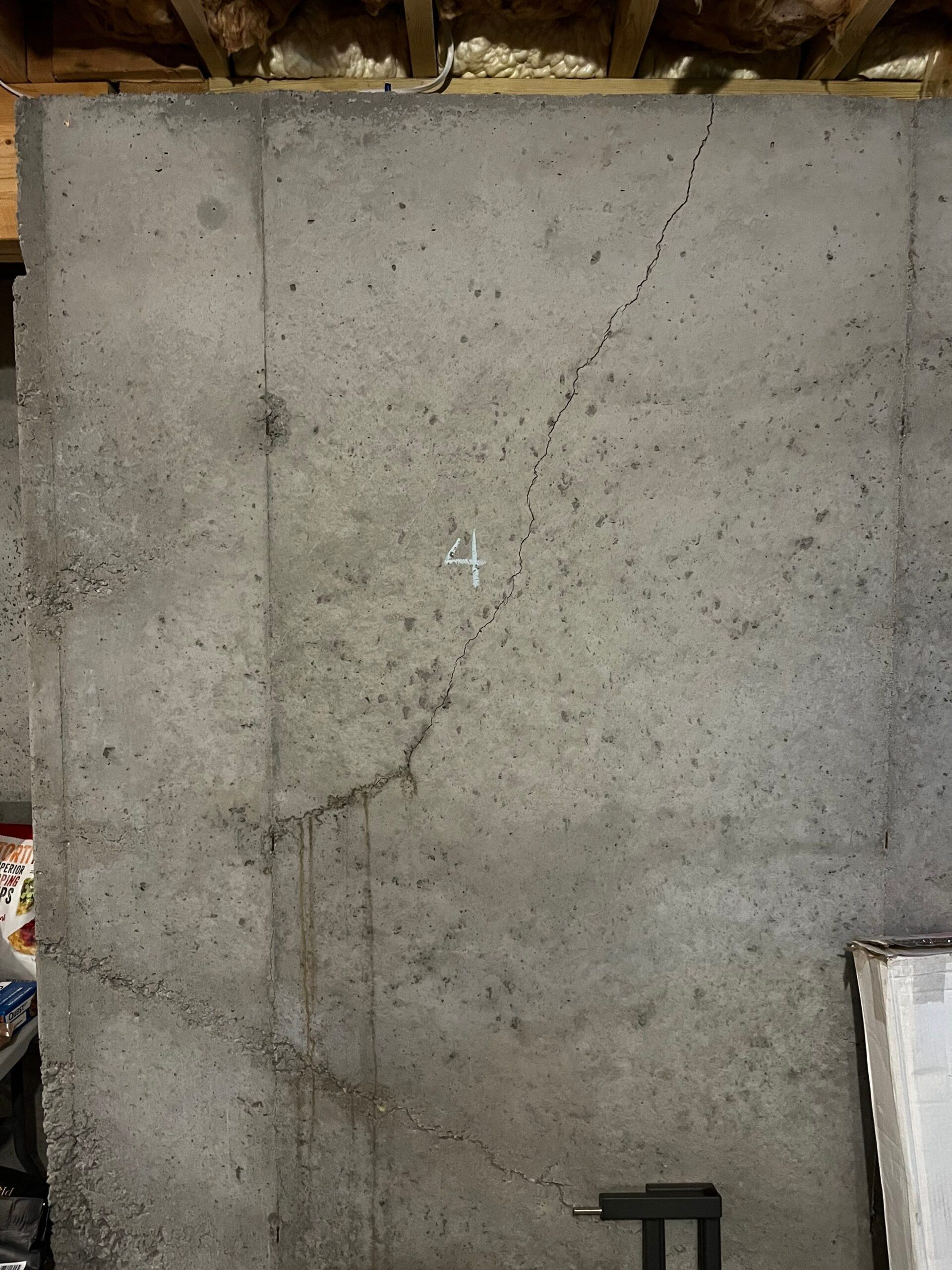Picture the scene: you go down into your basement and are confronted with cracks in the foundation wall. Naturally, you’re concerned- who wants a cracked foundation? Luckily, not all cracks in basement walls are created equal.
While some types of foundation cracks can be a symptom of some pretty major structural problems, others are worth keeping an eye on but are likely not something to be overly concerned about. It would even be fair to say that some foundation cracks are normal.
But how do you tell which ones to be worried about and which cracks in the foundations are normal? Well, read on:
Hairline cracks
A hairline crack is a thin crack in the concrete of your basement wall, usually running roughly vertically. They’re particularly common in newer homes, being caused by the settling of the house into the foundations and the way the poured concrete dries out.
Implications:
Finding a hairline crack in your foundation wall is usually nothing to seriously worry about. If you bought your home new then get in touch with your builder as there’s a good chance that repairs will be covered by warranty.
If you’re not covered, it’s usually a relatively straightforward and inexpensive repair that a skilled DIYer could manage.
What To Do:
Keep an eye on any hairline cracks in your basement wall. If they seem to be spreading or allowing water into your basement (i.e they’re damp or wet) then they should be repaired before they get worse, otherwise it’s a fairly low priority in terms of home repairs.
Vertical Cracks

Cracks which are wider than a hairline and run straight up and down or diagonally are known as vertical cracks. They’re most often caused by the weight of the house settling into the foundations and are perfectly normal in newer homes.
Implications:
Vertical foundation cracks are usually not particularly structurally significant but they can provide a way for water to enter your basement which can lead to problems.
They’re worth keeping an eye on but as long as they remain dry and aren’t too wide they generally don’t pose a structural threat to your home.
What To Do:
Keep a close eye on any vertical foundation cracks you find. If they remain relatively slim and totally dry, you can safely wait for a repair.
At the first sign of dampness, they should be treated with a crack injection material to ensure that your home remains watertight and your basement walls stay dry.
Horizontal Cracks
Horizontal foundation cracks run lengthways across your basement wall. They are most commonly caused by pressure from the soil which surrounds your home pushing up against the walls.
Implications:
Unfortunately, horizontal cracks in your basement walls are often something to worry about.
If you find these cracks in your house it suggests that your basement wall is starting to bow and that can be a very serious structural issue which will need professional investigation and repair.
What To Do:
If you find horizontal cracks in your foundations, consult a structural engineer as soon as possible. They will be able to advise you as to your options for reinforcing your foundations to avoid more serious damage.
Diagonal Cracks

A foundation crack which runs diagonally up a wall (between about 30o and 75o) are most often caused by differential settlement. This means that different parts of the foundations are settling at different rates across the wall.
Probably the most famous example of this phenomenon is the Leaning Tower of Piza.
Implications:
Diagonal cracks are often a symptom of a serious problem. They suggest that your foundation is moving and that can present serious structural problems for the rest of your home.
What To Do:
If you discover diagonal cracks in your basement wall, you should contact a professional immediately. They will be able to advise you on your options which may well be structural underpinning to avoid further slippage.
Stair-Step Cracks
If you have a block-work basement rather than a poured concrete foundation, you may find a stair-step crack opening up between the blocks.
These foundation cracks, as the name suggests, look like a set of steps running along the mortar joints between blocks.
Implications:
Stair-step cracks in basement walls suggest that you’re either facing settlement in one area of your foundation or moisture related problems happening on the outside of your walls.
Either way, these could develop into a serious problem if ignored.
What To Do:
Stair-step cracks require a thorough investigation and structural evaluation. Your structural engineer might suggest reinforcement or installing foundation piers to transfer the weight of your house from the cracked foundation wall directly to the soil below.
Shrinkage Cracks

If you’re finding narrow vertical cracks in your poured concrete foundation, you’ve likely got shrinkage cracks. As concrete dries, it shrinks slightly and sometimes this causes narrow cracks to form in the surface. These are particularly common in new build homes less than a year old.
Implications:
Shrinkage cracks are usually not much to be concerned about in terms of structural integrity so long as they remain dry.
What To Do:
While they’re not much threat to the stability of your home by themselves, they can provide an entry-way for water which can do more serious damage. It’s often a good idea to seal them to avoid leaks and dampness in your basement.
Expansion Cracks
Concrete moves and expands under different conditions. When it doesn’t have enough room for this expansion built in to the design through expansion joints, it can lead to cracking.
Implications
Unfortunately, expansion cracks are not something which can be safely ignored. Over time they are likely to worsen and pose a serious risk of water ingress and structural damage.
What To Do:
If your home doesn’t already have them installed, you should contact a professional to install expansion joints and to repair the cracks as soon as possible.
Settlement Cracks
Settlement cracks are a catch-all term for cracks caused by your foundation settling after construction. This is the normal process where the weight of your home “settles” down onto the walls of your foundations.
These can take a few different forms depending on the exact circumstances so they’re tricky to describe definitively. They can range from the fairly minor to really large and may be a single crack or a concertation of them around your basement walls.
Implications:
Depending on how large they are, settlement cracks may be a sign of something serious or they may be nothing to worry about- it really depends on the crack.
What To Do:
While settlement cracks in a foundation wall are fairly normal, they’re always worth monitoring even if they seem insignificant. Any crack can expand and become a way for water to enter your basement and cause all the chaos that that brings with it.
If you find larger cracks, or if lots of cracks are opening up, they should be investigated and dealt with right away by a qualified professional.
Conclusions
So, should you be concerned about that crack in your house foundation? Well, that depends. Some basement wall cracks require immediate action but others simply require close watching.
Most homes will have some normal foundation cracks, the trick comes from identifying which ones those are and which are ones of serious concern.
When To consult a professional
When it comes to finding cracks in your foundations a general rule of thumb is; if you’re worried enough to be reading up on it, talk to the professionals.
A specialist in basement repairs will be able to identify the problem which is opening up your walls and recommend a course of action to avoid further damage.
Some repairs can be undertaken by a keen DIYer but as your basement walls are a vital part of your home’s waterproofing (and no one wants a soggy basement) the peace of mind that comes from professional repairs is worth far more than you’ll save.

